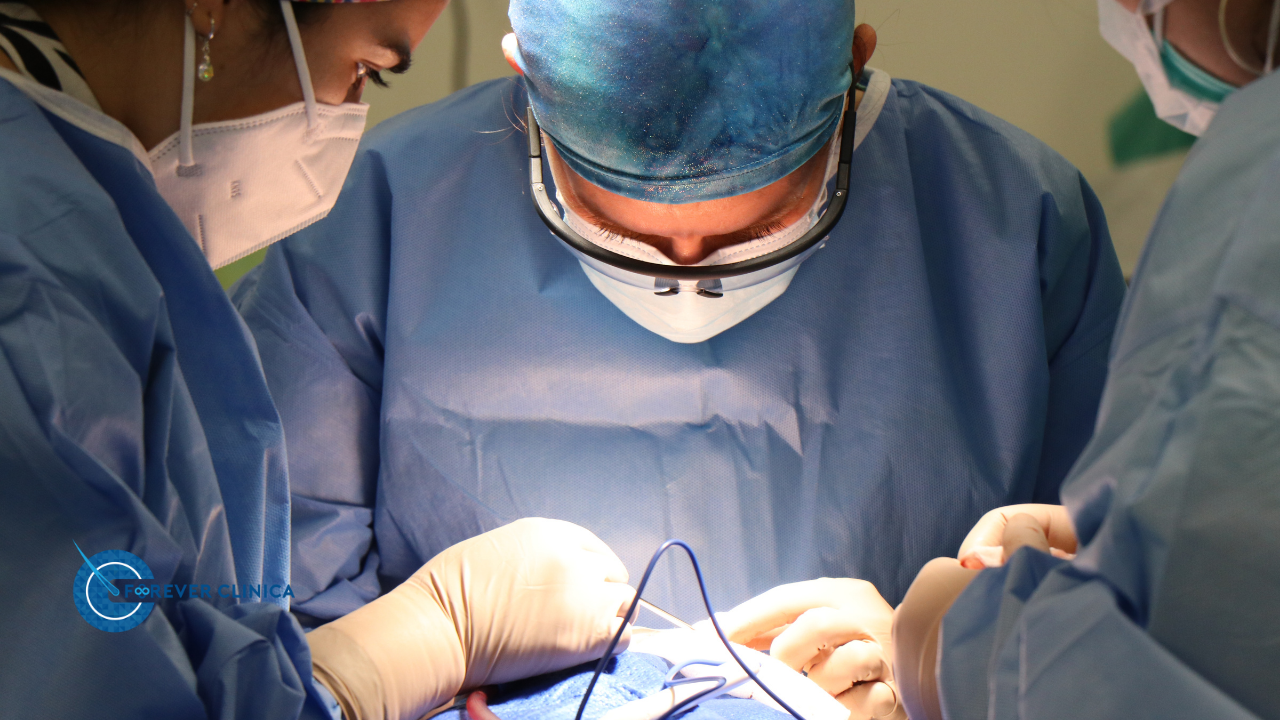In recent years, the Brazilian Butt Lift (BBL) has become one of the most sought-after cosmetic procedures worldwide. This transformative surgery promises to enhance the size and shape of the buttocks, providing a fuller, more contoured figure. However, with its growing popularity, numerous questions and misconceptions about the procedure have emerged. In this comprehensive guide, we’ll delve into the costs, risks, recovery process, and expected results of BBL surgery, addressing key concerns such as “How long does a Brazilian butt lift last?”, “What is a Brazilian bum lift?”, “Is it safe to get a BBL in Turkey?”, and “How much is a BBL in Turkey?”
What is a Brazilian Butt Lift?
A Brazilian Butt Lift, commonly referred to as BBL, is a popular cosmetic procedure designed to enhance the shape and volume of the buttocks. The surgery involves liposuction to remove excess fat from areas such as the abdomen, thighs, or flanks. This fat is then purified and injected into the buttocks to create a fuller, more lifted appearance.
The Procedure
The BBL procedure typically begins with the administration of anesthesia, either general or local, depending on the patient’s preference and the complexity of the surgery. The surgeon then performs liposuction to harvest fat from predetermined areas. This fat is processed to remove impurities and then carefully injected into various points in the buttocks to achieve a natural-looking contour.
The goal of a Brazilian Butt Lift is to provide a more youthful and aesthetically pleasing shape, enhancing not just the buttocks but the overall silhouette of the patient.
How Long Does a Brazilian Butt Lift Last?
One of the most common questions about BBL surgery is how long the results will last. The longevity of your Brazilian Butt Lift results depends on several factors, including lifestyle, weight management, and the skill of the surgeon.
Factors Affecting Longevity
- Fat Survival: During the BBL procedure, not all transferred fat cells will survive. On average, around 60-80% of the injected fat cells will remain long-term. The initial swelling will gradually subside, revealing the final result over several months.
- Lifestyle Choices: Maintaining a stable weight and a healthy lifestyle is crucial for preserving the results of a Brazilian Butt Lift. Significant weight fluctuations can affect the appearance of the buttocks and potentially diminish the results.
- Post-Operative Care: Following the surgeon’s post-operative care instructions, such as avoiding sitting directly on the buttocks for a few weeks, will help ensure the longevity of the results.
Overall, with proper care and maintenance, the results of a Brazilian Butt Lift can last for several years, with many patients enjoying their enhanced appearance for a decade or more.
Brazilian Butt Lift Cost: What to Expect
When considering a Brazilian Butt Lift, understanding the cost involved is crucial for planning and budgeting. The cost of a BBL can vary widely based on several factors, including location, surgeon’s expertise, and the complexity of the procedure.
Brazilian Butt Lift Cost in Turkey
Turkey has become a popular destination for cosmetic surgery due to its high-quality medical services and competitive pricing. The cost of a Brazilian Butt Lift in Turkey is often significantly lower than in many Western countries.
Average Cost: The average cost of a BBL in Turkey ranges between $2,500 and $5,000. This cost can include various components such as the surgeon’s fee, anesthesia, hospital stay, and post-operative care.
Comparing Costs
It’s essential to compare costs and ensure that you are receiving high-quality care. Opting for the lowest price may not always guarantee the best results or safety. Always research the clinic, read patient reviews, and consult with multiple surgeons to ensure you make an informed decision.
Brazilian Butt Lift Recovery: What to Expect
Recovery from a Brazilian Butt Lift is a critical phase of the procedure and plays a significant role in achieving optimal results. Understanding the recovery process can help set realistic expectations and prepare you for the post-surgery period.
Initial Recovery
Immediately after surgery, patients can expect some swelling, bruising, and discomfort in the treated areas. Pain is typically manageable with prescribed medication. During the first few weeks, it is crucial to avoid sitting directly on the buttocks to ensure that the fat grafts settle properly.
Long-Term Recovery
The majority of swelling should subside within a few weeks, but it can take up to six months for the final results to become fully visible. Patients are advised to follow their surgeon’s instructions carefully, including wearing compression garments, attending follow-up appointments, and avoiding strenuous activities.
Resuming Activities
Most patients can return to work within one to two weeks, depending on the nature of their job and their overall health. Light activities can generally be resumed after a few weeks, but intense exercise and activities should be avoided for at least six weeks to ensure proper healing.
Brazilian Butt Lift Risks: Understanding Potential Complications
As with any surgical procedure, there are inherent risks associated with a Brazilian Butt Lift. Being aware of these risks can help you make an informed decision and prepare for any potential complications.
Common Risks
- Infection: As with any surgical procedure, there is a risk of infection. Following post-operative care instructions and taking prescribed antibiotics can help minimize this risk.
- Fat Embolism: A rare but serious complication is fat embolism, where fat enters the bloodstream and travels to the lungs or other organs. Choosing a skilled and experienced surgeon can significantly reduce this risk.
- Asymmetry: Some patients may experience asymmetry in the buttocks due to variations in fat absorption. This is typically minor and can often be corrected with additional treatments if necessary.
Minimizing Risks: To minimize risks, it is essential to choose a board-certified surgeon with extensive experience in performing Brazilian Butt Lifts. Ensuring that the clinic adheres to high standards of safety and hygiene will also help reduce the likelihood of complications.
Brazilian Butt Lift Before and After: What Results to Expect
The transformation from before to after a Brazilian Butt Lift can be quite dramatic, offering a fuller, more contoured buttocks. However, managing expectations and understanding the realistic outcomes of the procedure is essential.
Before and After
Before the procedure, patients may have concerns about the size and shape of their buttocks, which can impact their overall body confidence. After the procedure, many patients report a significant boost in self-esteem and satisfaction with their new appearance.
Initial Results: The immediate post-operative results will be influenced by swelling and bruising, and it may take several months to see the final outcome.
Long-Term Results: Once the swelling has subsided and the fat has settled, patients will see a more defined and lifted buttocks. Results can be long-lasting with proper care and maintenance.
Is It Safe to Get a BBL in Turkey?
Turkey has become a leading destination for cosmetic surgery, attracting patients from around the world seeking high-quality care at competitive prices. The safety of getting a Brazilian Butt Lift in Turkey largely depends on selecting a reputable clinic and surgeon.
Choosing a Safe Clinic
- Research and Reviews: Investigate clinics and surgeons thoroughly, reading patient reviews and checking before-and-after photos of previous patients.
- Certifications and Accreditations: Ensure that the clinic is accredited by relevant medical boards and that the surgeon is board-certified.
- Consultations: Schedule consultations with multiple surgeons to discuss your goals, review their experience, and understand their approach to the procedure.
By taking these steps, you can make an informed decision and ensure a safe and successful Brazilian Butt Lift experience in Turkey.
Making the Right Choice for Your Brazilian Butt Lift
A Brazilian Butt Lift can be a transformative procedure, enhancing your body shape and boosting your confidence. By understanding the costs, risks, recovery process, and realistic outcomes, you can make an informed decision that aligns with your goals and expectations.
Whether you’re considering a BBL to achieve a fuller, lifted buttocks or simply to enhance your body contours, it’s essential to research thoroughly, choose a qualified surgeon, and follow post-operative care instructions diligently.
At Forever Clinica, we are committed to providing exceptional care and helping you achieve your aesthetic goals. If you’re considering a Brazilian Butt Lift or have any questions about the procedure, don’t hesitate to contact us for a consultation. Our team of experienced professionals is here to guide you through every step of the journey, ensuring a safe and successful outcome.




